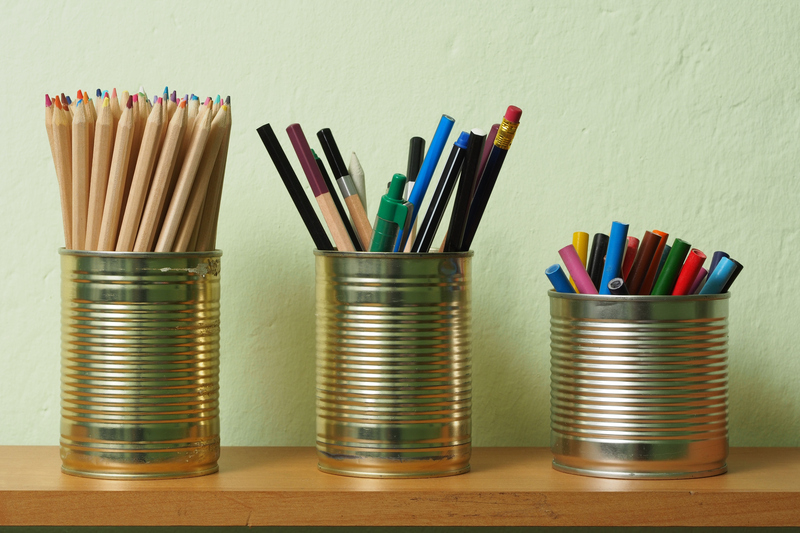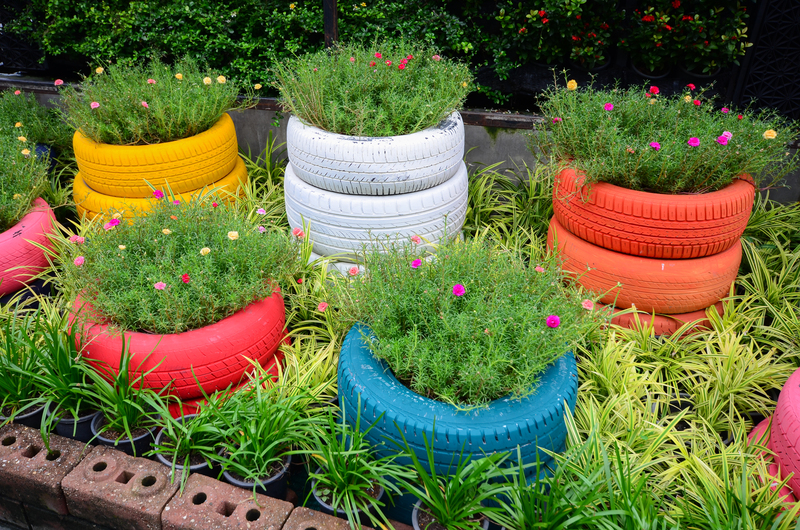Mastering the Art of Clutter Removal with Ease
Clutter can invade every aspect of our lives--our homes, workplaces, and even our minds. But what if you could transform your space quickly and painlessly? Mastering the art of clutter removal not only enhances your environment but also boosts your mental well-being, productivity, and overall happiness. In this comprehensive guide, we'll share actionable tips, proven decluttering methods, and expert strategies to help you conquer chaos with ease.
Why Clutter Removal Matters: The Hidden Impact of Mess
Living or working in a cluttered space affects more than just your aesthetic sensibilities. Studies show that physical clutter can increase stress, lower productivity, and even hinder creativity. Understanding the negative impact of disorganization is the first step toward embracing clutter management and making space for what truly matters.
- Improved focus: A tidy space minimizes distractions and enhances your ability to concentrate.
- Reduced stress: Clutter can be a constant, subtle drain on mental energy.
- More time: Organized environments make it easier to find what you need, saving precious minutes or hours.
- Increased happiness: Our surroundings have a direct impact on our overall mood and sense of well-being.

Understanding Clutter: What Causes It?
To master clutter removal, it's important to recognize its root causes. Clutter often results from an accumulation of unused, unwanted, or misplaced items. Some common reasons for clutter include:
- Sentimental attachment: Difficulty parting with items that hold memories.
- Poor organization: Lack of designated spaces or effective storage solutions.
- Lifestyle changes: Life events such as moving, downsizing, or family changes can create overflow.
- Procrastination: Putting off tidying until the mess feels overwhelming.
Recognizing these triggers will help you develop the right mindset and strategy for efficient clutter management.
The Psychology Behind Decluttering
Decluttering isn't just about making your rooms look neat. It's a transformative process with emotional and psychological benefits. Letting go of excess possessions can offer:
- A sense of control: Taking charge of your environment empowers you in all aspects of life.
- Emotional clarity: A tidy space can reduce anxiety and help you think more clearly.
- Freedom from the past: Releasing old items can help you embrace new opportunities and experiences.
Getting Ready: Preparing Yourself for Effective Clutter Removal
Preparation is key to easy and successful clutter removal. Set yourself up for a painless process with these actionable steps:
- Set Clear Goals: Decide what you want to achieve--whether it's a minimalist bedroom, a more functional kitchen, or a stress-free workspace.
- Gather Supplies: Grab boxes, trash bags, labels, cleaning products, and any tools you'll need.
- Schedule Time: Block off dedicated time slots in your calendar. Breaking the project into small, manageable sessions is less overwhelming and increases success.
- Get Support: If possible, involve family, roommates, or friends for extra motivation and helping hands.
Step-by-Step Guide to Clutter Removal
Mastering clutter removal doesn't have to be daunting. Use this step-by-step process to streamline your project and achieve results that last:
1. Start Small and Build Confidence
Begin with a single drawer, shelf, or surface. Completing mini decluttering tasks creates momentum and confidence to tackle larger jobs. Celebrate each win!
2. Sort Everything
As you clear items from your chosen area, sort them into categories:
- Keep: Items you love, need, and use regularly.
- Donate: Gently used items others may appreciate.
- Sell: Valuables you don't need that could benefit someone else.
- Recycle: Materials that can be responsibly processed.
- Trash: Anything broken, expired, or beyond repair.
3. Make Quick Decisions
Don't overthink--go with your intuition. If you haven't used or worn something in a year, it's probably time to part with it. The faster you decide, the easier the process becomes.
4. Organize What Remains
Arrange "keep" items back in a way that maximizes space and accessibility. Use baskets, boxes, dividers, and shelves for optimal organization.
5. Remove Clutter Immediately
Bag up trash and recycling and take it out as soon as you're done. Likewise, place donation or sell items in your car or garage, ready for drop-off or pickup. Removing clutter promptly prevents backsliding.
Decluttering by Room: Tips and Tricks for Every Space
Living Room Clutter Control
- Streamline surfaces: Keep coffee tables and shelves clear, displaying only a few cherished items or books.
- Storage: Invest in furniture with built-in storage for blankets, remotes, and games.
- Regular reset: Spend 5 minutes each evening returning items to their rightful place.
Kitchen and Pantry Organization
- Expired goods: Regularly check and discard old food or unused gadgets.
- Group similar items: Store baking supplies, spices, or snacks together for easy access.
- Utilize vertical space: Add shelves or hooks for mugs, utensils, or pots.
Bedroom Bliss
- Edit clothing: Donate or sell unworn clothes each season.
- Maximize closet space: Use organizers, slim hangers, and bins for shoes or accessories.
- Nightstand simplicity: Limit what stays by your bed to only essentials.
Bathroom Decluttering
- Limit products: Keep only daily essentials; toss expired or duplicate toiletries.
- Clear counters: Use drawer organizers or small baskets for storage.
- Shower simplicity: Store only in-use products in the shower or tub area.
Entryway and Home Office
- Entryway: Add hooks, baskets, or a bench for keys, shoes, and mail.
- Office: File paperwork promptly, clear off your desk, and keep only necessary tech or supplies.
Proven Decluttering Methods
There's no "one-size-fits-all" solution to clutter removal. Try these popular approaches and discover what resonates best with your personality and lifestyle:
- The KonMari Method: Made famous by Marie Kondo, this approach encourages you to let go of items that don't "spark joy" and organize by category.
- The Four-Box Method: As you declutter, use four boxes for 'Keep,' 'Donate,' 'Sell,' and 'Trash' to streamline your sorting.
- One-In, One-Out Rule: For every new item you bring into your space, remove an old one to maintain balance.
- 15-Minute Declutter: Set a timer and focus on quick, focused clutter removal sessions to avoid overwhelm.
Maintaining a Clutter-Free Lifestyle
Decluttering is not a one-time event--it's an ongoing process. To keep your space organized with ease:
- Develop daily habits: Allocate a few minutes each day for tidying or returning items to their places.
- Be mindful of new acquisitions: Practice intentional shopping and resist the urge for impulse buys.
- Regularly assess your possessions: Review and edit your belongings every season or whenever your needs change.
- Involve the household: Establish organizing routines and teamwork to maintain shared spaces.
- Celebrate simplicity: Focus on the benefits--more calm, clarity, and satisfaction.
Overcoming Obstacles in Your Decluttering Journey
Every path to mastering the art of clutter removal includes a few hurdles. Here's how to tackle common obstacles:
- Sentimental items: Photograph treasured keepsakes before letting them go, or select a few meaningful pieces to display.
- Lack of time: Declutter in small bursts--just 10-15 minutes a day can make a dramatic difference over time.
- Procrastination: Set deadlines and reward yourself for reaching milestones.
- Feeling overwhelmed: Envision the results and remind yourself of the benefits.
How Digital Decluttering Completes the Picture
In today's world, clutter isn't just physical. Digital overload can be equally draining. Mastering clutter removal means taming your inbox, organizing files and folders, and uninstalling apps you no longer use. Benefits of digital decluttering include improved focus, less stress, and a smoother workflow.
- Sort and delete: Unsubscribe from unwanted emails, and clear out old files/photos.
- Create digital folders: Organize documents for fast access.
- Maintain regularly: Set reminders for monthly digital clean-ups.
Environmental and Community Benefits of Decluttering
Giving away or properly disposing of items not only refreshes your space but also helps the environment and your community. Donating gently used goods supports local charities, while recycling reduces landfill waste. Clutter removal can even inspire others in your life to make positive changes!
Expert Tips for Mastering Clutter Removal with Ease
- Visualize your ideal space: Having a clear vision motivates you to stay committed.
- Declutter before organizing: Don't organize what you no longer need; lighten your load first.
- Set boundaries: Designate "clutter-free zones" in your home or office.
- Reward yourself: Enjoy small celebrations or perks after each decluttering session.
- Seek support: Consider hiring a professional organizer for stubborn areas or larger projects.

Frequently Asked Questions About Clutter Removal
- Q: How often should I declutter?
A: Ideally, aim for a minor decluttering every week, with deeper sessions seasonally or whenever life circumstances change. - Q: What should I do with items I'm unsure about?
A: Place them in a "maybe" box with a date. If you don't use or miss them in three months, let them go. - Q: How can I involve my family?
A: Make decluttering fun, set up challenges, and designate regular "reset" times together.
Conclusion: Enjoy the Freedom of a Clutter-Free Life
Mastering the art of clutter removal with ease empowers you to take back your environment, boost mental health, and embrace the simple joy of an organized space. Whether you're tackling a messy room or streamlining your entire home, these strategies make the process rewarding, efficient, and sustainable. Start your journey today--and discover how easy it is to live free of clutter!
Ready to reclaim your space? Share your progress, questions, or favorite tips below and help our community master clutter removal together!